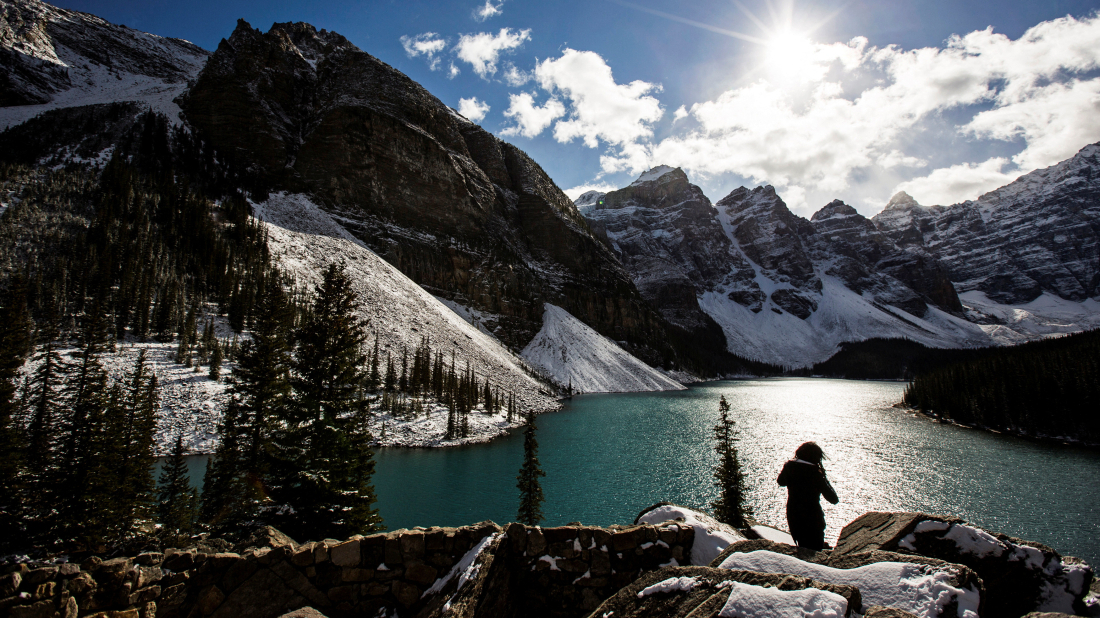Iran's government offers dialogue to protesters
Iran will seek dialogue with protest leaders after demonstrations in Tehran and other cities over a plunge in the currency's value that has accelerate...

Canadians are ditching holidays in the U.S. amid political tensions and rising tariffs, fuelling a domestic travel boom from Yukon to Nova Scotia, with road trips and national park visits leading the trend.
A growing number of Canadians are opting to explore their own backyard instead of heading south of the border, as political tensions with the United States spur a patriotic shift in travel habits.
The movement gained momentum earlier this year after U.S. President Donald Trump threatened to annex Canada and imposed tariffs on Canadian goods. In response, a “Buy Canadian” push has encouraged citizens to avoid U.S. businesses—including travel.
From the midnight sun in Yukon to whale watching off Nova Scotia, Canadians are rediscovering the country’s diverse offerings. Guess Where Trips, a company selling curated mystery road trip packages in four provinces, reported a 75% jump in sales compared to last year.
“It is clear that more Canadians are choosing to explore small businesses and hidden gems close to home,” said Jessica Bax, operations manager at Guess Where Trips. Road trips around Ottawa have become especially popular.
Prime Minister Mark Carney has also joined the push, unveiling a new “Canada Strong” pass offering free or discounted access to national parks, museums, and historic sites.
“Canadians are making choices to visit this great country, spend time here with their family, with their friends,” Carney said at a press briefing in Huntsville on Tuesday. “They’re making choices to buy Canadian products.”
Meanwhile, Trump’s decision to raise entrance fees at U.S. national parks for foreign visitors has added another incentive to stay home.
A Bank of Canada survey released this week found that 55% of Canadians plan to spend less on U.S. holidays, with 35% intending to travel more within Canada. TD Bank’s data showed 64% of respondents planned domestic travel, supported by a rise in domestic flight bookings.
Government data supports the shift: domestic tourism spending rose 4% in the first quarter, while Statistics Canada said the number of Canadians flying back from the U.S. dropped 17% in May. Car travel across the border fell by 37%.
In Nova Scotia, whale watching tour operator Walter Flower said business in Lunenburg—a UNESCO World Heritage town—has picked up significantly. “It’s been much busier this year,” he said of his 45-minute ocean excursions.
Toronto resident Divya Mohan, 39, changed her Texas travel plans to visit Winnipeg in April instead. “It just felt like the timing wasn’t right… maybe in the future,” she said, adding that the Canadian Museum for Human Rights impressed her.
In British Columbia, demand for recreational vehicles (RVs) has surged. “This year is going to be the busiest year in our company’s history,” said Storm Jespersen, regional manager at Evergreen Hospitality Group. “I don’t think you can even rent an RV very easily right now.”
While domestic travel can be pricey—especially to remote regions—many are choosing budget-friendly options such as weekend road trips or cabin stays.
“Doing road trips or just weekend trips to a cabin nearby is a great way to switch things up without spending thousands,” said Vancouver-based marketing executive Kramer Solinsky, who is planning visits to Montreal and Canada’s east coast. He has also chosen Mexico City and Osaka over traditional U.S. destinations.
To support demand in northern regions, Air North added capacity and new non-stop routes. It reported a 7.6% increase in arrivals to Yukon in the first half of the year. The airline said demand for northern travel is “clear and growing.”
Other carriers have followed suit. Porter Airlines increased its domestic summer network to 80% from 75%, while WestJet suspended nine U.S.-Canada routes in May, citing weaker demand.
Roman Abramovich, the Russian billionaire and former Chelsea Football Club owner, has assembled a “top tier” legal team, including a former White House advisor, as he prepares for a legal battle in Jersey.
Venezuelan President Nicolás Maduro on Sunday praised the country’s armed forces as “invincible warriors” during a year-end ceremony honouring the Bolivarian National Armed Forces, held in the coastal city of La Guaira.
Iran successfully launched three satellites on Sunday using a Russian Soyuz rocket from Russia’s Far East, marking the latest stage in growing Iran-Russia space cooperation.
Türkiye on Sunday denied reports that a Turkish Airlines passenger flight diverted from Libya due to fears of retaliation following a Libyan military delegation plane crash near Ankara.
Torrential rainfall across southern and eastern Spain over the weekend has left one person dead and two others missing, authorities said on Sunday evening, as overflowing riverbeds swept away vehicles and officials urged residents to stay indoors.
A technical incident occurred between the ASCO-owned tanker Kalbajar and the Turkish-flagged tanker Alatepe in waters off Istanbul, according to the Azerbaijan Caspian Shipping Closed Joint-Stock Company (ASCO).
Russian President Vladimir Putin held a meeting on the situation in Ukraine, during which he said Russian forces were making progress on several fronts, according to statements released by the Kremlin.
Latvia has completed construction of its border fence with Russia, marking a major step in strengthening national and EU external border security. Authorities say work will now focus on expanding surveillance technology and additional infrastructure along the eastern border.
The head of Yemen’s Presidential Council, Rashad al-Alimi, has ordered all forces linked to the United Arab Emirates to leave Yemen within 24 hours.
Start your day informed with AnewZ Morning Brief: here are the top news stories for the 30th of December, covering the latest developments you need to know.
You can download the AnewZ application from Play Store and the App Store.

What is your opinion on this topic?
Leave the first comment